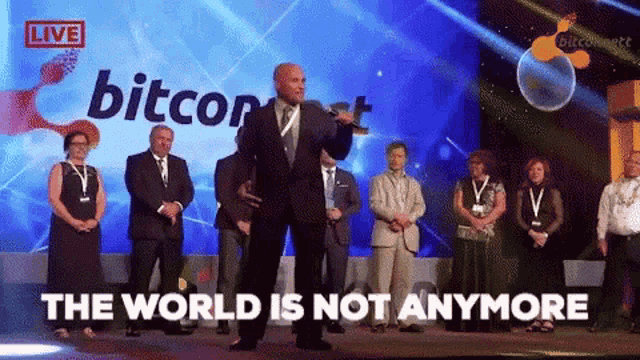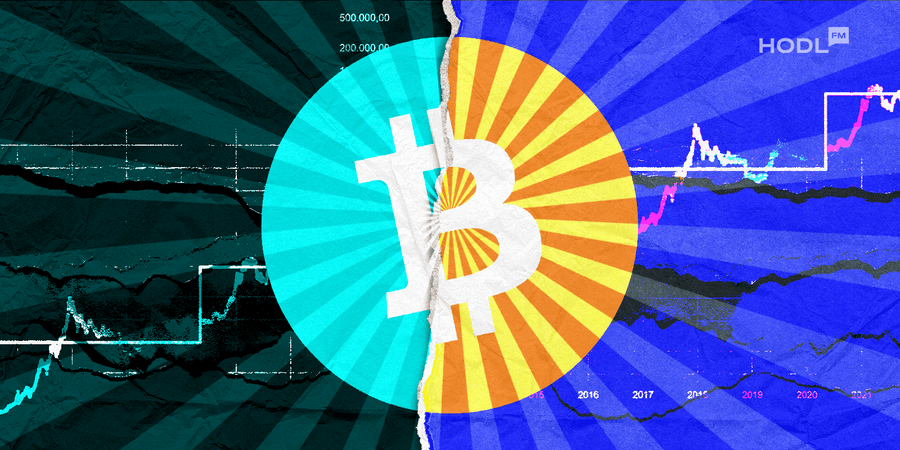In the beginning, there was blockchain, and the Bitcoin network and all cryptocurrency matters followed after that. Then Satoshi said, let there be halving, and it was good. Before the halving, BTC had dropped, and the altcoins were bleeding, and investors were worried.

Since its inception, Bitcoin has remained the king of cryptocurrencies, disrupting the financial world and capturing investors’ imaginations. However, few people understand the protocol’s essential aspects, like Bitcoin halving. This article explains what it is and why it concerns you.
Read More: Bitcoin Blitz: Unexpected Rise of 5%, Surges Up x2 Predictions, and SEC Standoffs!
Definition of Bitcoin Halving
The Bitcoin community considers halving a significant event in crypto evolution as it helps reduce the mining rewards awarded to the groups that secure the Bitcoin network. The event happens approximately every four years or at the point of every 210,000 blocks, and technically, it halves the rewards miners receive for their efforts. We expect the next halving event to occur between April and May 2024, hence the need to find some answers.
Importance of Bitcoin Halving
The Bitcoin halving process is significant because it acts as the Bitcoin network’s deflationary mechanism. By regularly reducing the rate of introducing new bitcoins in the network, halving prevents Bitcoin from going into inflation and getting devalued, just like with fiat currencies. With inflation sometimes getting so bad some people can’t pay attention, halving combats inflation by ensuring the cryptocurrency remains scarce. In theory, reducing the amount of Bitcoin in circulation should lead to price appreciation as long as the demand remains constant.
The technology underlying Bitcoin involves a complex network of computers called nodes, which collectively run the Bitcoin software and keep a comprehensive ledger of every transaction in the network. The transaction validation process within the Bitcoin network involves confirming a group of blocks instead of a single block. The transactions become a permanent addition once validated before being distributed among all nodes.
Role of Nodes in Transaction Validation
Bitcoin nodes are computers or data processors connecting to the Bitcoin network to enable receiving and sending related information. The nodes work together to create the blockchain’s governing infrastructure. Their purpose is to maintain the public ledger’s consensus, accomplished by the transaction validation process and ensuring the blockchain’s security and stability.
The halving event has been weaved into the core of a blockchain protocol from when the genesis block was launched as long as the network remains a proof-of-work (PoW) protocol. Bitcoin’s whitepaper explains the recurrent event in two lines of code showing when the halving happens and when the blockchain eventually stops halving, which is 64 times in the case of Bitcoin. The last halving event occurred on May 12, 2024, and while the next date isn’t yet precise, it’s scheduled to take place somewhere in April/May 2024.
Significance in Reducing New Bitcoin Supply
Investors and market analysts are historically concerned about Bitcoin halving events because they are almost always precursors to price surges. The supply limitation and reduced block rewards create the possibility of a reduced supply of Bitcoin entering the market when mining becomes unprofitable. If the demand for Bitcoin increases, it becomes evident that the price could rise. Moreover, halving showcases the crypto asset’s sustainability.
Historical Bitcoin Halvings
Bitcoin’s first halving happened in 2012 when the cryptocurrency’s block reward dropped from 50 to 25 BTC. The next one occurred in 2016, when the block price was further reduced to 12.5 BTC, and again in 2020, when the price became the current 6.25 BTC for every block. The general expectation that Bitcoin’s price will jump is tied to the supply and demand theory, which suggests that an item’s price increases when the supply is low and demand is high. Historical halvings have shown a positive impact, such as the 2012 halving that saw BTC’s price surge by 8,069% the following year, and the 2016 halving saw a 284% increase.
How Bitcoin Halving Affects Mining
The block rewards given to miners following the upcoming halving event are expected to reduce to 3.125 BTC. Reducing block rewards may lead to diminishing for miners, meaning that mining could be less lucrative, given the rising cost associated with purchasing and maintaining mining hardware and electricity costs.
The next halving’s impact on mining economies is significant since there’s every chance that miners will make less money to justify their costs, which will cause the market to become more decentralized. As miners close shop, Bitcoin’s hash rate will most likely decrease, with miners possibly looking for opportunities elsewhere with cryptocurrencies using the proof-of-work consensus mechanism.
Despite the upcoming halving, the block mining speed and the new Bitcoin supply rate hitting the market remain unaffected because the software is designed to fine-tune itself for difficult transaction verification circumstances and still operate during times of limited Bitcoin supply.
Factors Affecting the Timing of Halvings
The Bitcoin halving event, which happens at least once in four years, is snuggly designed into the Bitcoin network underlying software that also dictates when and the rate at which the new Bitcoin supply hits the market. The software requires the nodes to verify Bitcoin transactions through the mining process and receive mining rewards for proving the validity of the selected transactions.
The mining system verifies all transactions in the network in groups called blocks, and the network is designed to automatically halve the rewards that miners receive at every 210,000th block. According to Bitcoinblockhalf.com, the next Bitcoin halving event will happen sometime in April 2024, when block number 840,000 is expected to be mined. While the exact date isn’t yet known, the event will see the block reward fall from the current 6.25 BTC to 3.125 BTC.
The Bitcoin mining algorithm has been coded with a specific target to find a new block at least every 10 minutes. However, in practice, some blocks can take slightly more or less than the dedicated 10 minutes, which could increase or decrease the exact time it takes to reach the next halving event. If blocks consistently took 9.66 minutes to mine during a particular season, it would take 1,409 days to get the 210,000 block threshold, even though four years are typically 1,461 days when you add an extra day for a leap year.
Prediction of Final Halving in 2140
While the next halving event will positively impact the price of BTC, the future of Bitcoin halving presents a more interesting scenario. That’s because when all the 21 million coins are finally mined, an event is estimated to occur somewhere in 2140. Once that has happened, miners will still be needed, but there won’t be any more block rewards involving solving complex mathematical equations. When the network reaches that point, miners will receive their compensation through transaction fees.
The entire Bitcoin community believes that as we approach 2140, when the last Bitcoin is mined, the reward for mining will have reduced to possibly reach one Satoshi, which is 0.00000001 bitcoin, and which can no longer be halved, being Bitcoin’s lowest denomination. As a result, a satoshi could remain the mining reward for some time until the entire Bitcoin amount finally equals 21 million during 2140.

Implications of Limited Supply
Bitcoin’s limited supply of coins is bound to have a weighty impact on its value, something the world of finance is following keenly. This feature has set it apart from fiat currencies and many other cryptocurrencies. Hard-coded into its protocol, the fixed supply cap of 21 million coins is designed to imitate the scarcity model of precious metals like gold, unlike traditional currencies that central banks can print at will. Some implications of this limited supply include:
- Scarcity: At the finite quantity of 21 million Bitcoins and no more, the shortages will increase the value as more people covet it. The limited value will make BTC a store of value since investors prefer assets immune to inflationary pressures.
- Deflationary pressure: Bitcoin’s scarcity will create deflationary pressure on the asset’s value because its price will rise as its adoption grows and the supply remains fixed.
Recap of the Importance and Impact of Bitcoin Halving
The entire Bitcoin halving and mining phenomenon may have given you the picture of a million miners trying to change a single bulb, i.e. one does the job and the 999,999 others parade to validate that they did it. These halving events transcend the mere technical adjustment, mainly because of their impact on the entire crypto market and Bitcoin miners.

More on Bitcoin from HODL FM:
- Bitcoin: A Potential Game-Changer for Western Civilization, Says Coinbase CEO
- SEC’s Potential Approval of 12 Spot Bitcoin ETFs Creates Excitement and… Speculation
- From Bitcoin Prophets to Walmart Penguins – Crypto Predictions, Influencer Dramas, Regulatory Showdowns, and Retail NFTs
When the blockchain block is halved, miners must reconfigure their workings to remain afloat. Perhaps the increased competition that makes mining less efficient is why governments are yet to embrace Bitcoin – they hate the proof-of-work idea. Nonetheless, these same halving events would eventually see Bitcoin reach its potential, something most crypto investors and enthusiasts can’t wait to see happening.
Disclaimer: All materials on this site are for informational purposes only. None of the material should be interpreted as investment advice. Please note that despite the nature of much of the material created and hosted on this website, HODL FM is not a financial reference resource and the opinions of authors and other contributors are their own and should not be taken as financial advice. If you require advice of this sort, HODL FM strongly recommends contacting a qualified industry professional.





